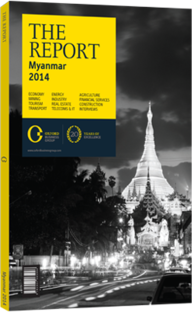A long drive: Improving regional road and rail links
After years of underinvestment in transportation infrastructure, due to embargoes, insurgencies, regional autonomy and mixed relations with neighbours, Myanmar is an exceedingly hard place to reach overland, much less transit. The country has essentially been cut off from the world, with small isolated border gates as its only surface connections to the outside.
It has not always been this way. The China-Burma road, from northern Myanmar to Yunnan, China, was in use in ancient times and was travelled by Marco Polo in the 13th century. The road was rebuilt and modernised in the late 1930s. During the Second World War, the Stilwell Road, running 1737 km, was built to connect Ledo, India to Kunming in Yunnan, China via Myanmar. But very quickly, by the late 1950s, the roads were in disrepair. Since then, they have not been used much, other than by locals crossing the borders to sell their goods.
Road & Rail Links
This is all set to change. Myanmar, China, India, Thailand and all of ASEAN see a better-connected Myanmar as good for all involved, and projects are in the works to bring transport infrastructure up to regional par. In 2007 China improved the 647-km stretch of the Stilwell Road from Kunming to Myitkyina, and in 2011 Maynmar’s Yuzana Company was awarded a contract to upgrade the 192-km Myitkyinato-Tannai section. An Indian Defence Ministry report also noted that in 2011 a contract was awarded for the final leg from Tannai to Pangsau Pass at the Indian border. Other transnational road projects are also being planned, including ongoing discussions to complete the 1400-km trilateral highway, which connects India, Myanmar and Thailand, running from Tamu on the Indian border to Myawaddy on the Thai border.
Rail is also being developed. In 2011 China Railway Engineering Corporation signed an agreement for a Muse-Kyaukpyu rail line, connecting Chinese territory with a port town in the Bay of Bengal. India and Myanmar have been in discussions to build the 127.4-km “missing link” line from Kalay to Tamu on the Indian border and held meetings on the project in early 2013. The Myanmar government has mentioned the completion of the third missing link, the 110-km stretch from Thanbyuzayat to Three Pagoda Pass, on the Thai border. If all the road and rail upgrades, improvements and extensions are completed, Myanmar will be better connected regionally than ever. China will meet India, and they will all have direct access to the rest of ASEAN.
While there has been discussion and some activity, challenges remain. India is suspicious of upgrades to the old Stilwell Road due to fears that the Chinese might use it in the event of a military conflict. The two countries fought a war in 1962, and tensions remain to this day. In November 2012 a former chief of India’s Eastern Command said the concern was that the Chinese would transport troops and equipment on the road into Indian territory. The country’s commerce minister has remarked that China might use the road for the purpose of dumping goods into the Indian market.
Connectivity Issues
Concerns have also been raised by Myanmar regarding the plans for the high-speed railroad from Yunnan to the Bay of Bengal. In general, Myanmar has been cooling on Beijing. In 2011 a hydroelectric project to be built by China in Myanmar (but supplying electricity to China) was stopped following local protests. The natural gas pipeline that runs the same route as the proposed rail has met with protests, with complaints about unfair compensation and environmental damage, the subtext of which is that China is getting more out of the deal than Myanmar.
While Myanmar is perfectly situated to be the transport hub of the region, it is becoming increasingly obvious that this sort of connectivity remains challenging despite the internal reform in Myanmar. The countries of the region have their disputes, which will make it difficult to implement some of the more ambitious plans.
Even if all parties were in agreement, it would also be very difficult from a technical point of view to complete some of the bigger projects. Much of the country has high mountains, jungle and other obstacles, and these will have to be overcome at great cost.
You have reached the limit of premium articles you can view for free.
Choose from the options below to purchase print or digital editions of our Reports. You can also purchase a website subscription giving you unlimited access to all of our Reports online for 12 months.
If you have already purchased this Report or have a website subscription, please login to continue.

